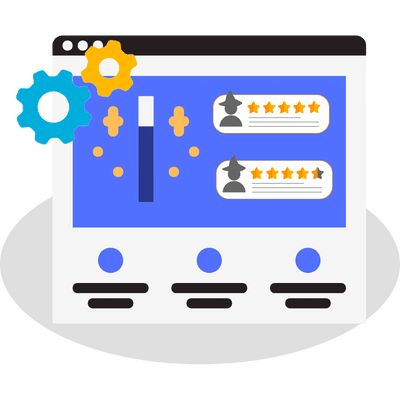Right now, gaining leads on your website is sort of like trying to hire a Defence Against the Dark Arts Teacher at Hogwarts: all the options you’ve cycled through just don’t seem to yield the best results, and your content isn’t getting out there. Sometimes your customers click onto a website just to view your product and are bombarded with a high-concept flurry of visuals. Or, the website links are weirdly named and your customer is lost.
Worst of all…the loading wheel of crippling panic. And then your customer is out the door because this is all taking way too long. So, websites can be overwhelming, but the good news is – they don’t have to be.
And we’re right on it with 9 proven tips to elevate the rate of your website leads from tragic to, well…magic?

1. Navigate Your Way to Success
You know the feeling. You click onto a website looking for a product or service and find that the specific option you need is nowhere to be found, and when you do find it, it’s under some abstract heading. The reality is, layout matters: 38% of people visiting a website for the first time will look at and click navigational links on your page.
To make their journey a smooth one, showcase your high-value pages like product and service guides. Ease of access is key: your customers will be able to make a purchase in a couple of clicks, and they won’t be overwhelmed by loads of options that detract from the experience you’re trying to provide them.

2. Structural Integrity

You’re unique, and so is your business! Show what sets you apart from your competitors by structuring your website to present a consistent brand identity. You can include testimonials, reviews, or stories from your customers to add personalisation to your website.
Additionally, use CTAs to make sure you’re releasing the right content at the right time. Tying this in with crisp, simple imagery will define the qualities that separate your business from others, and generate more leads as a result. These elements are the difference between a person investing in your website and product or leaving within 3-5 seconds.
3. Link Up and Get Building
Link Equity is a gamechanger. It’s a hierarchy of internal links within your website which allow you to provide recommendations to your customers based on their experience and activity so far. It will boost your SEO by linking topics and products on your website to relevant search engine results.
4. Light-up That Landing Page
Highlight the benefits of your service! Lead generation forms are incredibly useful as they collect information on prospective customers and make your system more efficient.
Using targeted copy to engage with website visitors will motivate them to invest in your products. You can use keywords to call your customers to action, such as ‘Book a Free Trial’, ‘Recommended For You…’ or ‘Register Here’ which visibly cater to the needs of your customers.

5. Call-To-Action Magic
Call-To-Actions (CTA’s) are the simplest way of taking your customers on an adventure with a simple click of a mouse. Primary CTAs are concise options such as ‘Book a Demo’ or ‘Sign Up’ which a website visitor will see straight away on your website. Secondary CTAs provide alternative options like ‘Download’ buttons.
6. Create Simple Forms for your visitors
Forms help gather information on your website visitors’ interests in your product and services. Unlike HTTP cookies, forms benefit the user and the business. Harnessing the handy business insights will help you reach your target audience more efficiently. The website visitor provides details that build business insights. In return, the user can access extra content, feedback and build a better connection with the brand. Happy days!

7. Create the ‘Pillar’ of Landing Pages

Have your target audience in mind when selecting the best topics for your pillar page. Make sure your questions fit the needs of your customer base. This way, you’re rising to any questions before they pop up and staying ahead of the game.
More efficiency = more lead generation!
Pillar pages provide further detail than a blog post like this; they hone in on value and supply handy links to boost the customer experience. A pillar page does not have a set word limit, although a recommended length is somewhere between 2,000 and 5,000 words.
8. Cluster your Niche Topics
Just like a particularly fabulous umbrella, topic clusters encompass pieces of useful and compelling content that are connected to a pillar page. They provide context that can assist in the generation of website leads.
Clusters allow you to target your industry-specific keywords. Ensure the words you use fit the niche of your topics to avoid a reduction in your sales. Thus, topic clusters can expand on the content you covered in your pillar pages. This generates organic traffic!
Some examples of gated and ungated content that increases lead generation are:
- Infographics
- Videos
- Webinars
- Podcasts
- Whitepapers
- eBooks
- Guides
- Case studies

9. Say Goodbye to Buffering

The conversion rate of a website drops by 5% every second it takes to load (Portent). So, time really is of the essence! Optimise your website performance and banish that smug loading wheel once and for all.
Ensure your running systems are up-to-date and you’ll have a website which is ready to impress, create increased visitor retention and grow SEO. Optimising your website’s performance and loading speed will increase your ranking in SERPs.
For more savvy tips on website performance, check out our previous blog on 9 ways to improve your website performance to really make it run like a well-oiled machine. And we’re always here to chat, so reach out… we love a good problem to solve!